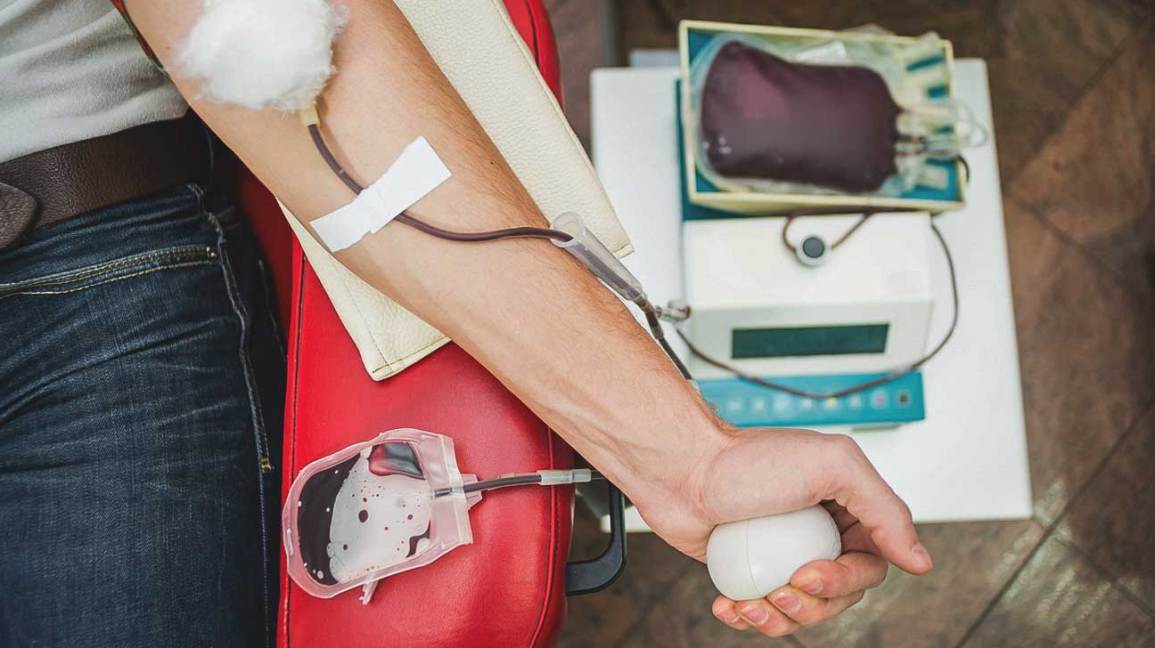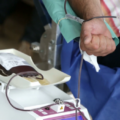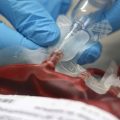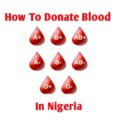A blood transfusion is a routine medical procedure in which donated blood is provided to you through a narrow tube placed within a vein in your arm. This potentially life-saving procedure can help replace blood lost due to surgery or injury. A blood transfusion also can help if an illness prevents your body from making blood or some of your blood’s components correctly. Blood transfusion saves lives and improves health, but many patients requiring transfusion do not have timely access to safe blood. Providing safe and adequate blood should be an integral part of every country’s national health care policy and infrastructure.
WHO recommends that all activities related to blood collection, testing, processing, storage and distribution be coordinated at the national level through effective organization and integrated blood supply networks. The national blood system should be governed by national blood policy and legislative framework to promote uniform implementation of standards and consistency in the quality and safety of blood and blood products.
In 2015, 71% of reporting countries, or 123 out of 173, had a national blood policy. Overall, 60% of reporting countries, or 104 out of 173, have specific legislation covering the safety and quality of blood transfusion, including:
- 79% of high-income countries
- 55% of middle-income countries
- 45 % of low-income countries.
Blood supply
About 117.4 million blood donations are collected worldwide. 42% of these are collected in high-income countries, home to 16 % of the world’s population.
About 12 700 blood centres in 170 countries report collecting a total of 100 million donations. Collections at blood centres vary according to income group. The median annual donations per blood centre is 1 300 in the low-income countries, 4 100 in lower-middle-income countries and 8 500 in upper-middle-income countries, as compared to 23 000 in the high-income countries.
There is a marked difference in the level of access to blood between low- and high-income countries. The whole blood donation rate is an indicator for the general availability of blood in a country. The median blood donation rate in high-income countries is 32.6 donations per 1000 people. This compares with 15.1 donations per 1000 people in upper-middle-income countries, 8.1 donations per 1000 people in lower-middle-income countries, and 4.4 donations per 1000 people in low-income countries.
66 countries report collecting fewer than 10 donations per 1000 people. Of these, 37 countries are in the WHO African Region, 7 in the WHO Region of the Americas, 5 in the WHO Eastern Mediterranean region, 4 in the WHO European Region, 7 in the WHO South-Eastern Asia Region, and 6 in the WHO Western Pacific Region. All are low- or middle-income countries.
Blood donors
Age and gender of blood donors
Data about the gender profile of blood donors show that globally 32% of blood donations are given by women, although this ranges widely. In 14 of the 119 reporting countries, less than 10% of donations are given by female donors.
The age profile of blood donors shows that, proportionally, more young people donate blood in low- and middle-income countries than in high-income countries. Demographic information of blood donors is important for formulating and monitoring recruitment strategies.
Types of blood donors
There are 3 types of blood donors:
- voluntary unpaid
- family/replacement
- paid.
An adequate and reliable supply of safe blood can be assured by a stable base of regular, voluntary, unpaid blood donors. These donors are also the safest group of donors as the prevalence of bloodborne infections is lowest among this group. World Health Assembly resolution WHA63.12 urges all Member States to develop national blood systems based on voluntary unpaid donations and to work towards the goal of self-sufficiency.
Data reported to WHO shows significant increases of voluntary unpaid blood donations in low- and middle-income countries:
- An increase of 11.6 million blood donations from voluntary unpaid donors from 2008 to 2015 has been reported by 139 countries. The highest increase of voluntary unpaid blood donations is in the South-East Asian (83%) Region and the Americas (70%). The maximum increase in absolute numbers was reported in the South-East Asia region (5.9 million donations), followed by the Western Pacific Region (2.7 million donations) and African Region (1.1 million).
- 78 countries collect more than 90% of their blood supply from voluntary unpaid blood donations (35 high-income countries, 32 middle-income countries and 11 low-income countries). This includes 56 countries with 100% (or more than 99%) of their blood supply from voluntary unpaid blood donors.
- In 58 countries, more than 50% of the blood supply is still dependent on family/replacement and paid blood donors (8 high-income countries, 36 middle-income countries and 14 low-income countries).
- 19 countries report collecting paid donations in 2015, around 370 000 donations in total.
Blood screening
WHO recommends that all blood donations should be screened for infections prior to use. Screening for HIV, hepatitis B, hepatitis C, and syphilis should be mandatory. Blood screening should be performed according to the quality system requirements. Of reporting countries, 13 are not able to screen all donated blood for 1 or more of the above infections.
Irregular supply of test kits is one of the most commonly reported barriers to screening. 99.8% of the donations in high-income countries and 99.9% in upper-middle-income countries are screened following basic quality procedures, as compared to 83.2% in lower-middle-income countries and 76.2 % in low-income countries. The prevalence of transfusion-transmissible infections in blood donations in high-income countries is considerably lower than in low- and middle-income countries (Table 1).
Table 1. Prevalence of transfusion-transmissible infections in blood donations (Median, Interquartile range (IQR)), by income groups
| HIV | HBV | HCV | Syphilis | ||
| High-income countries | 0.002% | 0.02% | 0.02% | 0.02% | |
| (0.004% – 0.02%) | (0.008% – 0.08%) | (0.005% – 0.11%) | (0.006% –0.14%) | ||
| Upper middle-income countries | 0.10% | 0.36% | 0.24% | 0.44% | |
| (0.02% – 0.22%) | (0.18% – 0.73%) | (0.05% – 0.38%) | (0.12% –1.09%) | ||
| Lower middle-income countries | 0.14% | 2.27% | 0.39% | 0.70% | |
| (0.03% – 0.6944%) | (0.80% – 4.87%) | (0.18% –0.95%) | (0.19% – 1.27%) | ||
| Low-income countries | 0.86% | 3.64% | 0.93% | 0.60% | |
| (0.39% – 2.40%) | (2.55% – 8.59%) | (0.50% – 1.95%) | (0.30% – 1.63%) |
These differences reflects the variation in prevalence among population who are eligible to donate blood, the type of donors (such as voluntary unpaid blood donors from lower risk populations) and the effectiveness of the system of educating and selecting donors.
Blood processing
Blood collected in an anticoagulant can be stored and transfused to a patient in an unmodified state. This is known as ‘whole blood’ transfusion. However, blood can be used more effectively if it is processed into components, such as red cell concentrates, platelet concentrates, plasma and cryoprecipitate. In this way, it can meet the needs of more than one patient.
The capacity to provide patients with the different blood components they require is still limited in low-income countries: 58% of the blood collected in low-income countries is separated into components, 66% in lower-middle-income countries, 97% in upper-middle-income countries, and 91% in high-income countries.
Supply of plasma-derived medicinal products (PDMP)
World Health Assembly resolution WHA63.12 urges Member States to establish, implement and support nationally-coordinated, efficiently-managed and sustainable blood and plasma programmes according to the availability of resources, with the aim of achieving self-sufficiency. It is the responsibility of individual governments to ensure sufficient and equitable supply of plasma-derived medicinal products, namely immunoglobulins and coagulation factors, which are needed to prevent and treat a variety of serious conditions that occur worldwide.
Only 50 of 173 reporting countries produce plasma-derived medicinal products (PDMP) through the fractionation of plasma collected in the reporting country. A total of 83 countries reported that all PDMP are imported, 24 countries reported that no PDMP were used during the reporting period, and 16 countries did not respond to the question.
Around 16.1 million litres of plasma from 41 reporting countries was fractionated for the production of PDMP during the year. This includes around 36% of plasma recovered from the whole blood donations.
Clinical use of blood
Unnecessary transfusions and unsafe transfusion practices expose patients to the risk of serious adverse transfusion reactions and transfusion-transmissible infections. Unnecessary transfusions also reduce the availability of blood products for patients who are in need.
WHO recommends the development of systems, such as hospitals transfusion committees and haemovigilance, to monitor and improve the safety of transfusion processes. In this regard:
- 124 countries have national guidelines on the appropriate clinical use of blood: 32 countries in the African region (71% of reporting countries in the region), 17 in the Americas (50 %), 14 in the Eastern Mediterranean (74 %), 34 in Europe (83%), 10 in the South East Asia (91%), and 17 in the Western Pacific (74%).
- Transfusion committees are present in 45 % of the hospitals performing transfusions: 12 % of hospitals performing transfusion in the African region have a transfusion committee, 17 % in the Americas, 57% in the Eastern Mediterranean, 68% in Europe, 79% in South-East Asia and 40% in the Western Pacific.
- Systems for reporting adverse transfusion events are present in 34 % of hospitals in the African region, 81% in the Americas, 64% in the Eastern Mediterranean, 86% in Europe, 80% in South East Asia and 38% in the Western Pacific.
- 46% of reporting countries have a haemovigilance system. The European region has the highest percentage of countries with haemovigilance systems (76%), followed by the Eastern Mediterranean (53%), the Western Pacific (48%), Africa (38%), South-East Asia (36%), and the Americas (21%).
Blood transfusions
There are great variations between countries in terms of the age distribution of transfused patients. For example, in the high-income countries, the most frequently transfused patient group is over 65 years of age, which accounts for up to 75% of all transfusions. In the low-income countries, up to 52% of transfusions are for children under the age of 5 years.
In high-income countries, transfusion is most commonly used for supportive care in cardiovascular surgery, transplant surgery, massive trauma, and therapy for solid and haematological malignancies. In low- and middle-income countries it is used more often to manage pregnancy-related complications and severe childhood anaemia.





